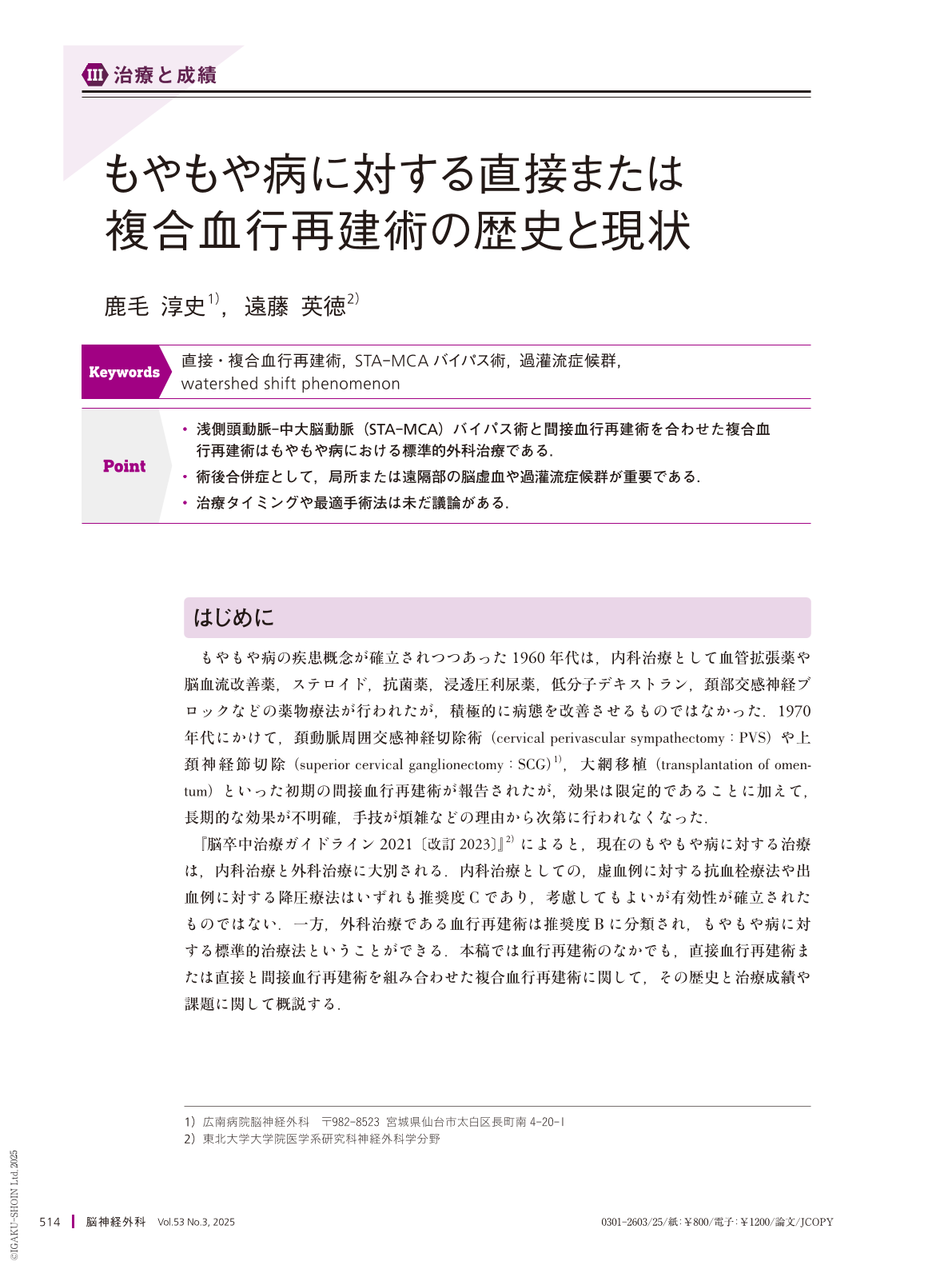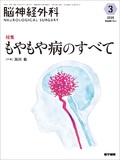Japanese
English
- 有料閲覧
- Abstract 文献概要
- 1ページ目 Look Inside
- 参考文献 Reference
Point
・浅側頭動脈-中大脳動脈(STA-MCA)バイパス術と間接血行再建術を合わせた複合血行再建術はもやもや病における標準的外科治療である.
・術後合併症として,局所または遠隔部の脳虚血や過灌流症候群が重要である.
・治療タイミングや最適手術法は未だ議論がある.
We reviewed the history and development of revascularization surgery for moyamoya disease, particularly STA-MCA bypass. In the early stages, medical treatments, such as vasodilators, were ineffective. In the 1970s, indirect surgical methods were introduced but have shown limited success. Direct bypass techniques have evolved with advancements in microsurgery, and STA-MCA bypass has become the standard treatment. Surgery improves the collateral blood flow and reduces the risk of stroke, especially in patients with ischemia. Despite being generally safe, perioperative complications, such as cerebral infarction and hyperperfusion syndrome, may occur. Adult and pediatric patients show different hemodynamic responses that require tailored postoperative care. Long-term studies have shown high graft patency and reduced risk of stroke, although late cerebrovascular events may occur. Meta-analyses support revascularization, especially in cases of hemorrhage. The optimal timing of surgery remains controversial. The risk factors for postoperative stroke include age < 5 years, diabetes, and a higher Suzuki grade. Continued research is needed to refine individual treatment strategies.

Copyright © 2025, Igaku-Shoin Ltd. All rights reserved.


